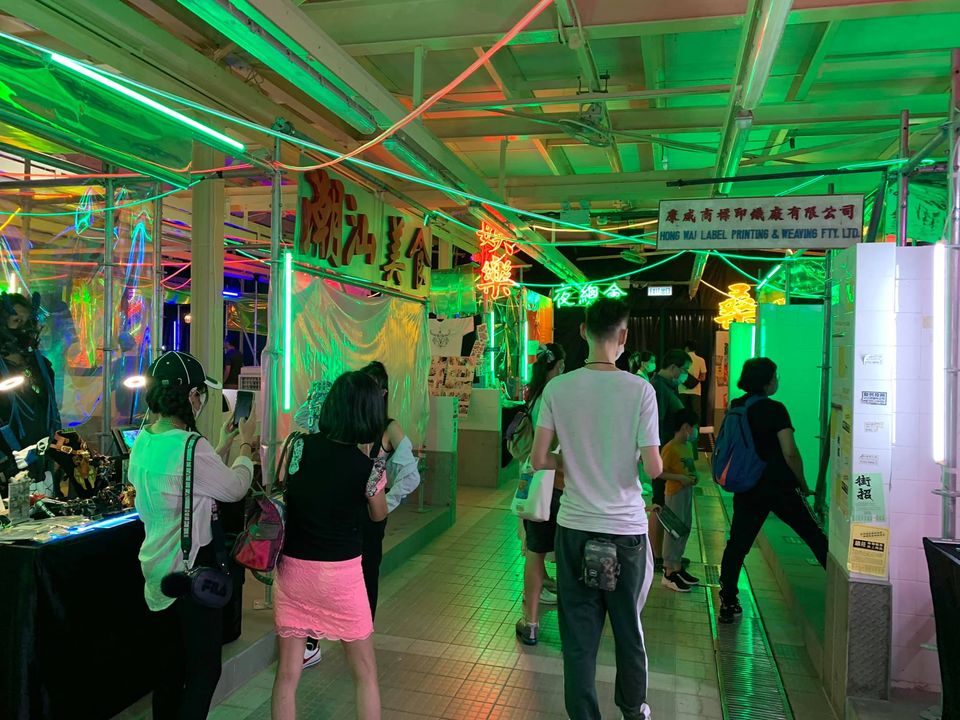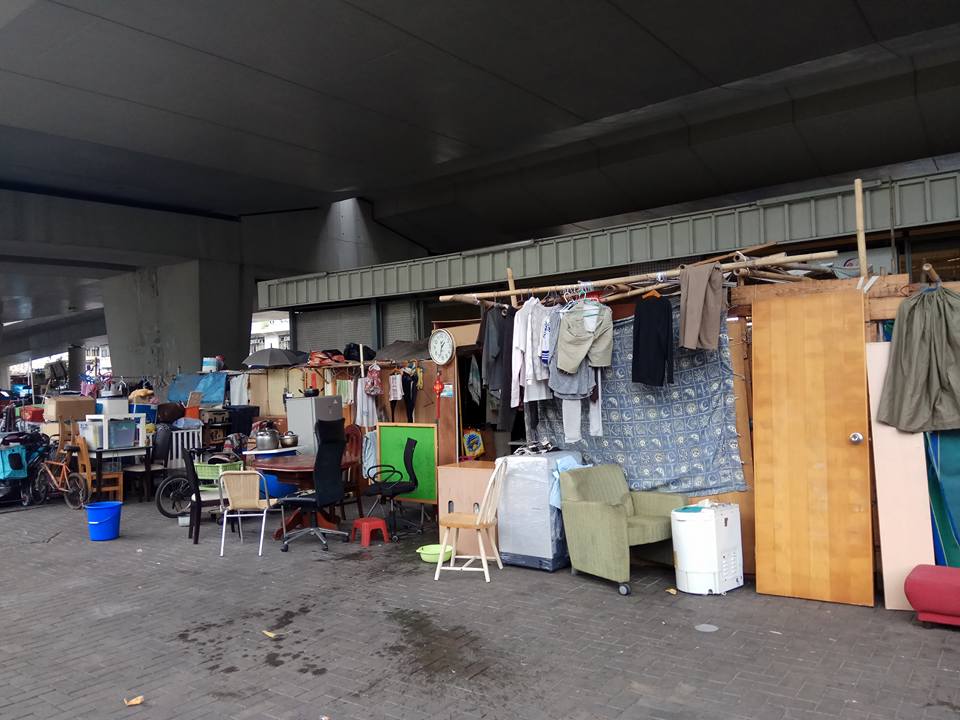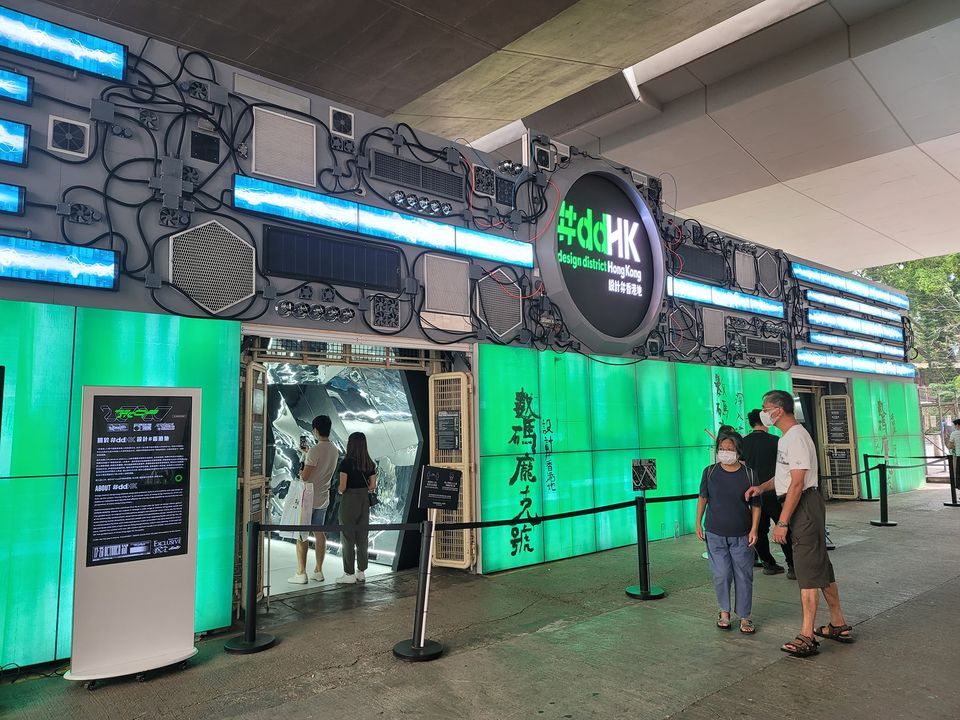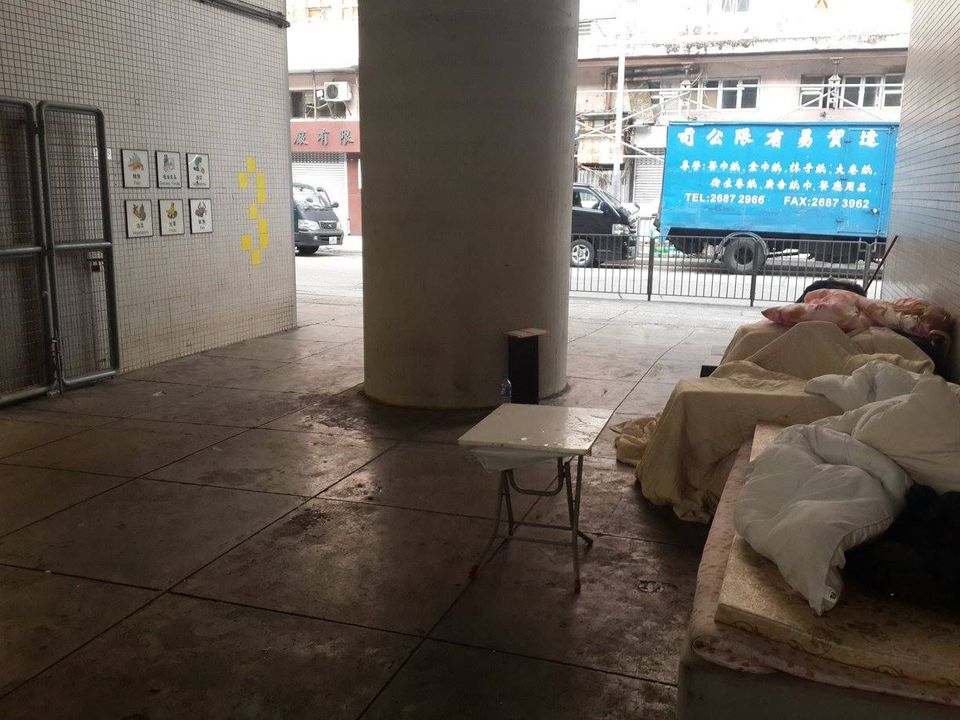A local design group has come under fire for installing a colorful, neon-lit exhibition at an underpass that, before multiple government evictions, was home to dozens of street sleepers in Hong Kong’s poorest neighborhood.
The “Heart of Cyberpunk” exhibition in Sham Shui Po opened over the weekend, converting a three-block stretch of the Tung Chau Street Temporary Market into a sea of futuristic shopfronts and showpieces.

Design District, the group behind the free-to-enter nine-day exhibition, calls the showcase “an extraordinary journey of time in the future” and an “immersive fashion experience” featuring the work of local designers. Visitors can also attend workshops, guided tours, and buy souvenirs at a gift shop.
The Hong Kong Tourism Board has promoted the exhibition on its website and Facebook page, attracting criticism that Design District was an “accomplice” in the government’s efforts to send homeless people that were living outside the market packing.
The accusations are not entirely unfounded—Design District is an offshoot of the Hong Kong Design Center, which according to its website is a publicly-funded design promotion agency and a “strategic partner” of the government in “fostering creative and design thinking.”
On Instagram, the location tag for the market is now adorned with shots of the exhibition’s installations, including LED murals, retro arcade game consoles, and a dizzying wall of mirrors.
The flood of new, flashy photos is a contrast to the small handful of pictures tagged to the location before the exhibition’s opening. One old photo from 2017 shows volunteers offering free haircuts to the district’s elderly—including homeless people who took shelter outside the market.
Threats and evictions
The vicinity of Tung Chau Street Temporary Market, once home to a group of street sleepers who had built huts out of wood scraps and shipping pallets on the underpass, had long been an eyesore to authorities seeking to erase signs of the city’s yawning wealth gap.

Homeless people who had taken shelter there were subject to frequent, and at times, violent, evictions at the hands of government personnel. In a 2017 Legislative Council meeting, lawmakers raised concerns about reports that officers were seizing the personal belongings—including blankets and medication—of homeless people while threatening them to move. (Police denied confiscating their items.)
That same year, a fire broke out when a homeless person was cooking a meal using a portable gas stove, an incident that the government used as justification to double down on efforts to disperse the community on grounds of safety.
Read more: Falling through the cracks: Homelessness in Hong Kong
In 2019, authorities cordoned off a considerable area beneath the underpass with padlocked chain-link fencing, forcing street sleepers to migrate to an open-air, uncovered park nearby where they are merciless to rainstorms and adverse weather.
According to government statistics from July, there are 1,423 street sleepers in Hong Kong. But official figures of the city’s homeless community, welfare groups say, are an undercount.
Gentrification and ‘a great irony’
Local concern groups and netizens alike have criticized Design District , calling the “Cyberpunk” exhibition a tone-deaf gentrification project that further marginalizes an already powerless and voiceless community.

Hamlets Land, a group that raises awareness about urban and rural planning issues, said on Facebook that the showcase is a “great irony” for sprucing up the area and slapping on labels like “cyberpunk.”
“[The exhibition] is a result of undermining the lives of the grassroots and the disadvantaged,” the page wrote.
Angry netizens accused Design District of working with authorities to expel street sleepers from their only place of shelter.
In response to a Facebook comment that the group was responsible for the evictions, Design District said there has been a “big misunderstanding.”
It said that there is no relation between the exhibition and the government’s clearing of the homeless camp, and that the area in the market has already been vacant for “more than two years.”
“The organizer is a small NGO that [aims to] promote local design. We do not have the power to influence or urge any persons, organization or government department to clear homeless people for a nine-day event,” the group’s response read.

Design District said that it had worked closely with local businesses in the district to put together the exhibition, and also supports organizations that operate tours to improve the public understanding of the challenges faced by communities in Sham Shui Po.
Hong Kong Design Center, which is Design District’s parent organization, wrote in an email to Coconuts: “Sham Shui Po has always been the place for local fashion and design enthusiasts. Most of the exhibits in this event were sourced locally at Sham Shui Po.”
The center added that Sham Shui Po residents were also employed as “staff and helpers” in putting together the installation.
For many, the “Heart of Cyberpunk” exhibition represents more than one local group’s seeming lack of sensitivity in navigating a project at a site that, just a year and a half ago, was still a sprawling homeless camp for the poorest members of society.
As Hamlets Land, the concern group, puts it: “Tung Chau Street is a reflection of how the Hong Kong government’s poor handling of housing and welfare issues has led to problems in our community.”



Reader Interactions